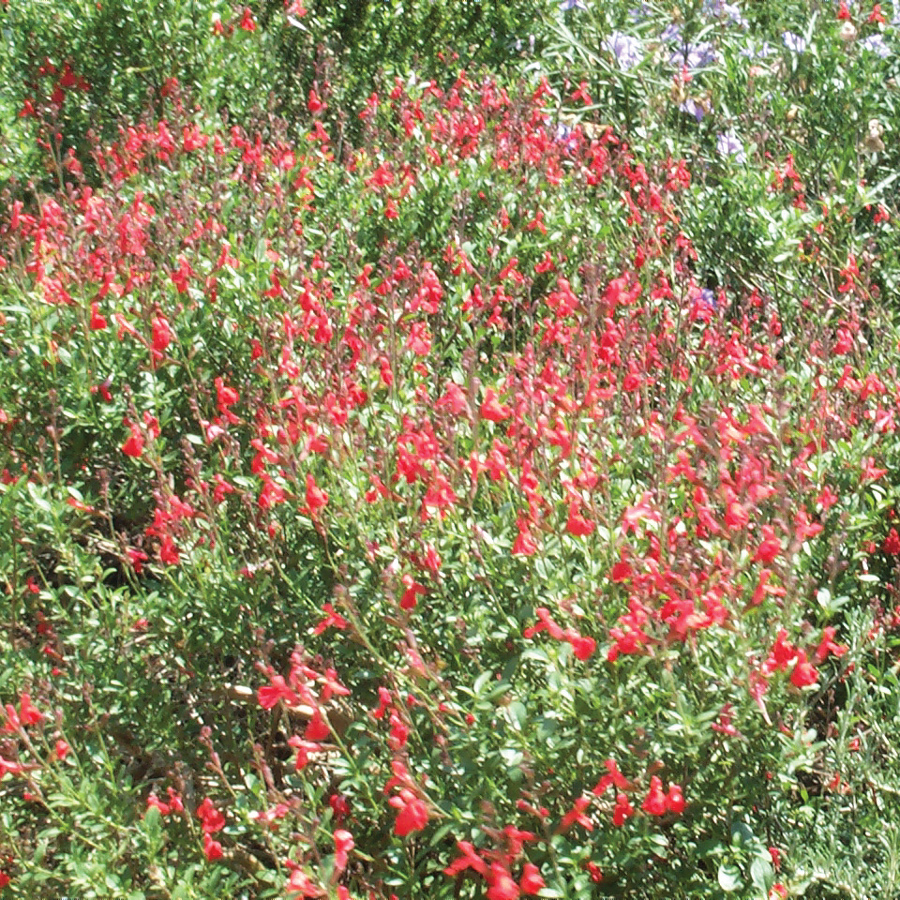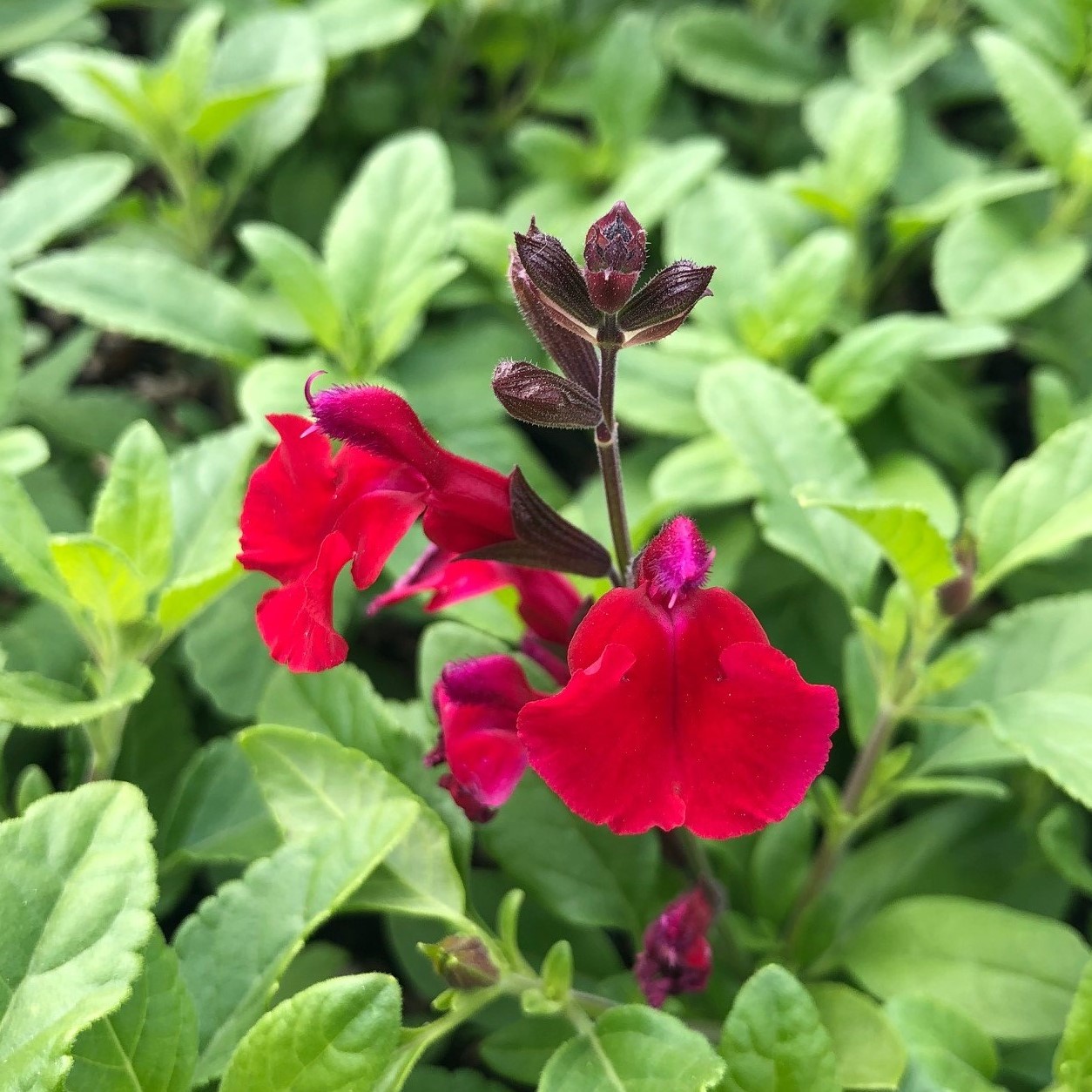

For more information on addressing these problems, see factsheets HGIC 2771, Insecticidal Soaps for Garden Pest Control, HGIC 2049, Powdery Mildew, and HGIC 2100, Gray Mold (Botrytis Blight). Potential problems for salvias include damping-off of seedlings, stem and root rots, powdery mildew, Botrytis blight, aphids, spider mites, and whiteflies. Insect pests are a more likely problem in greenhouses. Diseases most commonly occur in greenhouse production or under cool, wet weather conditions. Salvias have few problems when grown in ideal conditions. Some perennial salvias may be sown directly in the garden according to packet instructions. Start other salvias from seed 12 weeks before planting time and follow packet instructions regarding sowing depth. Expect germination to occur in 12 to 15 days. Do not cover the seeds with soil since they require light to germinate. Sow seeds of the annual Salvia splendens indoors 6 to 8 weeks before planting time. Gardeners can start both annual and perennial salvias indoors from seed. To avoid freeze damage, wait for new growth to begin in early spring before pruning.

When perennial salvias go dormant, leave the stems intact. During the summer, remove the faded bloom spikes of salvias to encourage continuous flowering. For more information on preparing the soil for a perennial garden, see HGIC 1153, Growing Perennials.ĭivide perennial salvias in early spring when new growth begins. Many perennial salvias will grow well without supplemental fertility if sited in a well-prepared soil containing compost. Incorporate the fertilizer into the soil according to package instructions. In the absence of soil test results, apply a slow-release fertilizer formulated for annuals when planting annual salvias. For more information on submitting a soil sample for testing, see HGIC 1652, Soil Testing. For best results, amend the soil prior to planting according to the results of a soil test. The best time to plant salvias is in spring after the danger of frost is passed. Most salvias prefer slightly acidic soils. Excessive water and fertilizer can increase fungal disease problems for salvias. Once established, most salvia species are quite drought-tolerant and require little care.
AUTUMN SAGE PLANT FULL
Most salvias prefer full sun and well-drained soils, but some will bloom well in part shade. Depending on the species, salvias range in width from 12 inches to 4 feet. Some species reach 5 to 6 feet within a season, while others grow low enough to be used along flower bed edges. The genus Salvia exhibits a wide range of forms and habits however, most species grow rapidly. Salvias are also deer and rabbit resistant due to their pungent foliage. One benefit of growing salvias is their appeal to hummingbirds, butterflies, and other pollinators. As some of the best summer-blooming annuals and perennials, salvias can be used for mass plantings, borders, containers, accents, and cut flowers. Salvias have brilliantly colored flowers, square stems, and attractive, often scented foliage. They provide an incredible variety of fragrance, bloom, plant habit, and color.

Salvias (also known as sages) are popular garden plants because they flower for an extended period and do well in hot, dry conditions.

Joey Williamson, ©2007 HGIC, Clemson Extension Mexican Bush Sage ( Salvia leucantha) flowers in autumn.


 0 kommentar(er)
0 kommentar(er)
